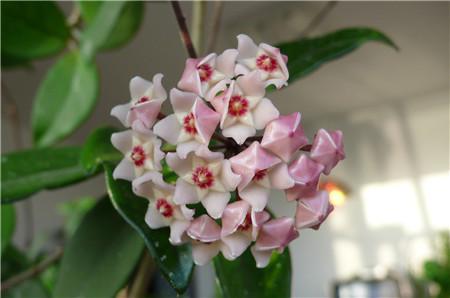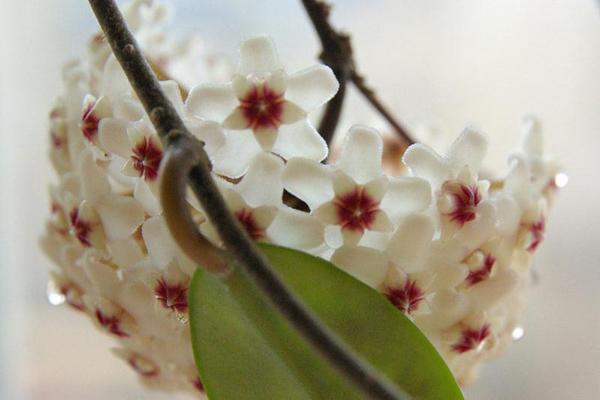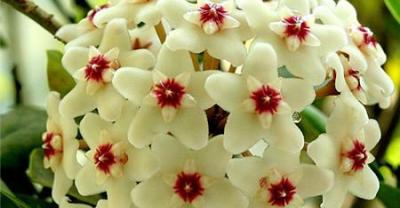Planting method and Propagation of Flowers-- Cymbidium
Ball orchid, a perennial vine herb, its flowers are like spherical umbrellas, strange and elegant in shape, and send out charming fragrance, raise a pot at home, can create a fresh and elegant home environment, very lovely. Then how to raise the ball orchid?

Cymbal
The culture method of ball orchid
Soil requirement
Ball orchid like fertile, breathable, well-drained soil, do not like heavy clayey soil, potted ball orchid had better choose loose and fertile slightly acidic humus soil, can add appropriate amount of vermiculite to the soil, can also apply a little calcium superphosphate as base fertilizer, can also use 7 parts of rotten leaf soil mixed with 3 parts of coarse sand as culture medium, the effect is very good.
Watering method
Ball orchid leaves are fleshy, they contain a lot of water, so it is necessary to ensure that they are in a slow running state and do not have stagnant water when they are cultivated. Ball orchid watering too much will cause root rot, but too dry will affect growth, so watering should be dry and wet. In the middle of summer, it is necessary to ensure sufficient water, properly increase watering, and often spray water to the leaves to increase air humidity. In autumn and winter, the temperature decreases and the growth of orchid slows down. at this time, watering should be reduced and it is appropriate to water once every two weeks.
Cymbal
Light intensity
Ball orchid likes scattered light, semi-overcast environment. When the family maintains the ball orchid, the spring and autumn season will put it on the south-facing windowsill to ensure that the leaves are green; in summer, the ball orchid should be moved to the indoor shade to avoid direct sunlight, otherwise it will easily cause the leaves to turn yellow. But can not be over-shaded, long-term lack of light, ball orchid leaves will become dull, flowers are few but not gorgeous.
Temperature requirement
Bulb orchid is cold-resistant, and the most suitable temperature for growth is 15-28 ℃. It can also grow well in high temperature environment. Winter ball orchid will enter a dormant state, at this time the ball orchid should be put in a cold, slightly dry environment, let it completely dormant. The dormancy temperature was controlled about 10 ℃ earlier, and frostbite was easy to occur when the dormancy temperature was lower than 5 ℃, and then the leaves fell, and finally the whole plant died.
Cymbal
Fertilization method
Ball orchid fertilization mainly choose organic fertilizer or compound fertilizer, fertilize once or twice a month in the peak season, choose nitrogen and phosphorus combination of thin cake fertilizer water, other times because the ball orchid growth is slow, should reduce fertilization or stop fertilization, so as not to cause fertilizer damage. Summer can appropriately increase the number of fertilization, increase the content of phosphorus and potassium fertilizer, and promote better bud budding and flowering.
Timely pruning
In the process of growth, orchid should pick the heart in time to promote the better germination of new branches, and set up flower racks in time to promote its upward climbing growth. When the orchid is about to wither, don't cut off the stem and let it wither naturally. Because the ball orchid blossoms in the second year will germinate in the same place of the flower stem, if the flower stem is cut off, it will affect the number of flowers.

Cymbal
Matters needing attention in the Culture of Cymbidium
Don't move the flowerpot at will
For the blooming ball orchid, do not often move the flowerpot, otherwise it is easy to cause bud drop, flower drop. After the orchid falls, it is necessary to protect the stem of the flower and promote it to blossom in the coming year.
Control of diseases and insect pests
Orchid is a flower and foliage plant, and its leaves are of high ornamental value. However, in the process of maintenance, there will be some diseases and insect pests, affecting the beauty, the common diseases and insect pests are anthrax, leaf spot, leaf spot, spraying chemicals in time after the disease is found. You can use 50% carbendazim wettable powder 600 times liquid or 70% mancozeb wettable powder 400-6w liquid spray. In addition, shell insects and powder breakage can be used with 40% omethoate emulsion 800-100 times or 80% dichlorvos emulsion IOC. Double liquid spray.

Reproduction method
The cuttage method is used to propagate and raise seedlings, and the cuttings can be carried out at all times except in winter and early spring because of low temperature, and it is more suitable to propagate by cutting method from March to April every year.
Ball orchid one-or two-year-old stems and current year's tender stems can be used as cuttings, cut into a section of 5cm and 8cm, leaving 2 nodes, and cut off the leaves inserted into the matrix, leaving only 1 leaf and 2 leaves. After the wound is fully dried, the cuttings are inserted into the sand bed or the soil loose flowerpot matrix 1Univer 3 or 1pm 2 part cultivation. If it is 180 flowerpots, about 10 cuttings can be inserted in each pot.
The cuttings had better be cut and inserted in order to survive, and the light was strong from April to June. In order to maintain the cool environment, two layers of black gauze net could be set up, and the cuttings could take root in about 20 days, and new leaves would grow after one month. After the roots were well developed, they could be transplanted to larger flowerpots and then moved to the semi-overcast ventilation place for routine management.
- Prev

Deciphering some tips on family planting of flowers and plants
Planting some flowers and plants to decorate homes and courtyards is now a mainstream behavior, and people can grow flowers and plants in the process.
- Next

Several Green Plants Not Suitable for Indoor Planting
Many times because I like flowers, I will move a lot of plants to my home. As everyone knows, some plants are poisonous. Once I touch them, the consequences may be...
Related
- Fuxing push coffee new agricultural production and marketing class: lack of small-scale processing plants
- Jujube rice field leisure farm deep ploughing Yilan for five years to create a space for organic food and play
- Nongyu Farm-A trial of organic papaya for brave women with advanced technology
- Four points for attention in the prevention and control of diseases and insect pests of edible fungi
- How to add nutrient solution to Edible Fungi
- Is there any good way to control edible fungus mites?
- Open Inoculation Technology of Edible Fungi
- Is there any clever way to use fertilizer for edible fungus in winter?
- What agents are used to kill the pathogens of edible fungi in the mushroom shed?
- Rapid drying of Edible Fungi

